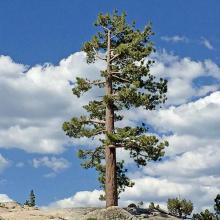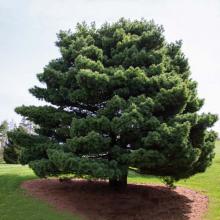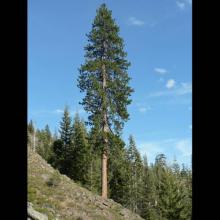Pinus contorta
Common name:
Lodgepole pine
Genus:
Pinus
Family:
Pinaceae
Order:
Pinales
Pinus strobus
Common name:
Eastern white pine
Genus:
Pinus
Family:
Pinaceae
Order:
Pinales
Pinus ponderosa
Common name:
Ponderosa pine
Genus:
Pinus
Family:
Pinaceae
Order:
Pinales
Pinus contorta
Common name:
Lodgepole pine
Genus:
Pinus
Family:
Pinaceae
Order:
Pinales
Pinus strobus
Common name:
Eastern white pine
Genus:
Pinus
Family:
Pinaceae
Order:
Pinales
Pinus ponderosa
Common name:
Ponderosa pine
Genus:
Pinus
Family:
Pinaceae
Order:
Pinales
Pinus contorta
Common name:
Lodgepole pine
Genus:
Pinus
Family:
Pinaceae
Order:
Pinales
Pinus strobus
Common name:
Eastern white pine
Genus:
Pinus
Family:
Pinaceae
Order:
Pinales
Pinus ponderosa
Common name:
Ponderosa pine
Genus:
Pinus
Family:
Pinaceae
Order:
Pinales
Genus (Plantae): Pinus
A pine is any conifer in the genus Pinus (/ˈpiːnuːs/) of the family Pinaceae. Pinus is the sole genus in the subfamily Pinoideae. The Plant List compiled by the Royal Botanic Gardens, Kew and Missouri Botanical Garden accepts 126 species names of pines as current, together with 35 unresolved species and many more synonyms. Pine may also refer to the lumber derived from pine trees; pine is one of the more extensively used types of wood used as lumber.
Etymology
The modern English name "pine" derives from Latin pinus, which some have traced to the Indo-European base *pīt- ‘resin’ (source of English pituitary). Before the 19th century, pines were often referred to as firs (from Old Norse fura, by way of Middle English firre). In some European languages, Germanic cognates of the Old Norse name are still in use for pines—in Danish fyr, in Norwegian fura/fure/furu, Swedish fura/furu, Dutch vuren, and German Föhre—but in modern English, fir is now restricted to fir (Abies) and Douglas fir (Pseudotsuga).
Description
Pine trees are evergreen, coniferous resinous trees (or, rarely, shrubs) growing 3–80 m (10–260 ft) tall, with the majority of species reaching 15–45 m (50–150 ft) tall. The smallest are Siberian dwarf pine and Potosi pinyon, and the tallest is an 81.79 m (268.35 ft) tall ponderosa pine located in southern Oregon's Rogue River-Siskiyou National Forest.
Pines are long lived and typically reach ages of 100–1,000 years, some even more. The longest-lived is the Great Basin bristlecone pine, Pinus longaeva. One individual of this species, dubbed "Methuselah", is one of the world's oldest living organisms at around 4,600 years old. This tree can be found in the White Mountains of California. An older tree, now cut down, was dated at 4,900 years old. It was discovered in a grove beneath Wheeler Peak and it is now known as "Prometheus" after the Greek immortal.
The spiral growth of branches, needles, and cone scales may be arranged in Fibonacci number ratios. The new spring shoots are sometimes called "candles"; they are covered in brown or whitish bud scales and point upward at first, then later turn green and spread outward. These "candles" offer foresters a means to evaluate fertility of the soil and vigour of the trees.
Reference: Wikipedia



